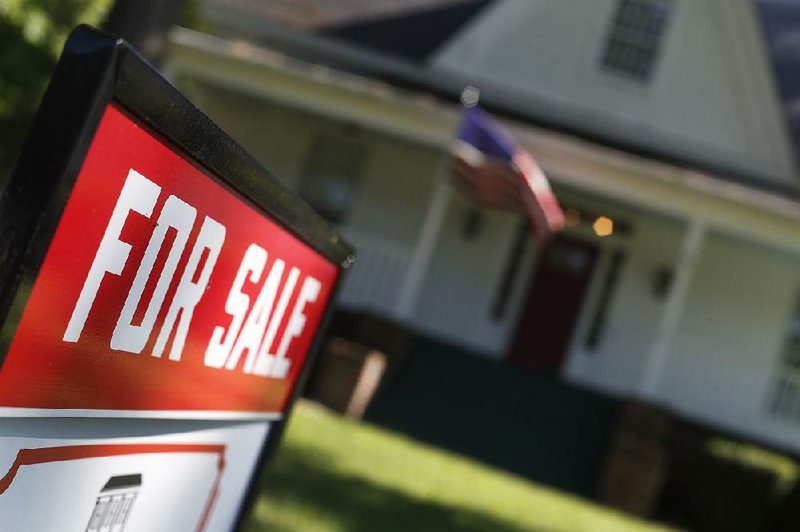Thirty-year mortgage rates have fallen this week to their lowest levels since late 2016, handing cheaper borrowing costs to homeowners and greater risks to the money managers that invest in home loans.
Freddie Mac's 30-year mortgage rate fell 0.11 percentage point this week to 3.73%, extending a downward trend that started in November, the company said Thursday. By contrast, a year ago the rate stood at 4.55%.
The average rate for 15-year, fixed-rate home loans slipped this week to 3.16% from 3.25%.
With long-term rates having fallen more than a percentage point since November, applications to refinance home loans are close to their highest levels since November 2016, a separate report said this week.
Total mortgage applications rose 1.3% in the week ended June 21 from a week earlier, while refinance applications increased 3%, according to the Mortgage Bankers Association.
Freddie Mac surveys lenders across the country between Monday and Wednesday each week to compile its mortgage rate figures.
The average doesn't include extra fees, known as points, which most borrowers must pay to get the lowest rates.
The average fee on 30-year fixed-rate mortgages was unchanged this week at 0.5 point.
The average fee for the 15-year mortgage rose to 0.5 point from 0.4 point.
The average rate for five-year adjustable-rate mortgages fell to 3.39% from 3.48% last week. The fee held steady at 0.4 point.
As the long-term mortgage rate has dropped, homeowners have responded by applying to refinance their loans into lower rates, sending the refinance index to trend near its highest level since November 2016.
Refinancings are one of the main variables mortgage traders must accurately forecast to properly value their investment and predict the speed at which the underlying home loans will be paid off. For those who paid a premium for their bonds, this can hurt returns as they get their investment back more quickly than expected.
Falling rates mean mortgage-backed-security investors will need to add duration, referred to as "convexity hedging." They can do so by purchasing Treasury notes, receiving fixed rates in swaps or even buying more mortgage-backed securities, where the lower coupons usually offer higher duration.
There is a positive note in this negative news for those investors, though. If the historic trend seen since 1999 is any guide, this drop in rates shouldn't lead to a surge in mortgages to buy homes, as sales are lagging population growth with many Americans priced out of the housing market.
Since the start of 2000, home prices have risen 114%, helping send the U.S. homeownership rate to near its lowest level in nearly half a century. So while the population over that time has grown about 17%, new-home sales have dropped 28% and existing-home sales have risen just 5%. Both new and existing sales are the main drivers of net mortgage-backed-securities supply.
Year-to-date net supply of agency mortgage-backed securities is about $51 billion, according to a recent report by Morgan Stanley. Their forecast for the year is about $210 billion in net supply, while 2018 saw $281 billion.
More Americans signed contracts to buy homes last month compared with April, the National Association of Realtors reported Thursday, a sign that buyers may be ready to take advantage of low mortgage rates and stabilizing home prices. Even with the 30-year average mortgage rate below 4%, home sales slowed in the first five months of the year.
U.S. home price gains slowed for the 13th-straight month in April.
The pickup in pending sales is welcome news for a housing market that lost momentum last year, as expectations of a Federal Reserve interest-rate cut have already started to push down borrowing costs for consumers.
Still, purchasing a median-priced home is a financial stretch for Americans in the majority of markets despite slowing growth in real estate prices, low borrowing costs and rising wages. The U.S. Home Affordability Report, released Wednesday by Attom Data Solutions, found that median selling prices were too high for average wage earners in three-fourths of the nation's real estate markets during this quarter.
Pending sales is a measure of home purchases that are usually completed a month or two later.
Information for this article was contributed by Christopher Maloney and Ryan Haar of Bloomberg News and by staff members of The Associated Press.
Business on 06/28/2019
